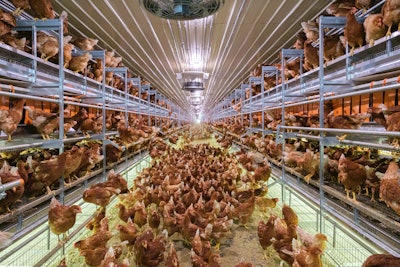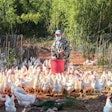
Cage-free layer resistance to the Northern Fowl Mite (NFM) could vary from bird to bird, according to research from Purdue University.
After a research trial that exposed cage-free layers to an NFM infestation, Associate Professor of Animal Sciences Marisa Erasmus and her research team found that 80% of the flock had medium levels of the parasite per bird, or approximately 11-50 mites.
Additionally, Erasmus found that 80% of parasites were found on only 20% of the birds, indicating that there are individual bird differences concerning resistance.
“Some birds appear to be more resistant the NFM,” she said at the 2024 PEAK Conference. “While the true reason for this is unknown, there could possibly be differences in inflammatory responses, feather density or structure of the feathers that contribute to an individual bird’s resistance.”
Additionally, Erasmus found that six weeks is most likely when NFM levels peak after infestation. However, more research needs to be conducted.
More about NFM infestations
The NFM is the one of the costliest pests to the U.S. egg industry, causing a decrease in welfare and production, explained Erasmus.
According to Erasmus, an NFM infestation can be brought into a house through wild birds, equipment, people, rats or mice. The NFM can be found in all types of housing systems but are particularly problematic in cage-free systems due to the bird’s exposure to the house.
Controlling pests in cage-free systems is more complicated than in cages, and it can further depend on other factors such as the management style used, complexity of the house and environmental differences.
Erasmus added that producers will know if their flock has an NFM infestation if birds are showing restlessness, agitation, distress, discomfort or increased preening. NFM are usually found near the vent or surrounding the tail feathers of the bird.
“One bug can be responsible for an entire infestation,” she said. “Finding an infestation is like finding a needle in a haystack.”
Additionally, Erasmus explained that the life cycle of the NFM is approximately 5-12 days and is fully completed on the host. This means one NFM can lay eggs and cause an infestation quickly.


















